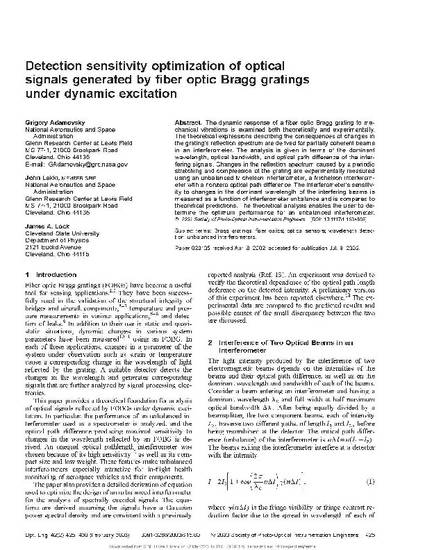
The dynamic response of a fiber optic Bragg grating to mechanical vibrations is examined both theoretically and experimentally. The theoretical expressions describing the consequences of changes in the grating's reflection spectrum are derived for partially coherent beams in an interferometer. The analysis is given in terms of the dominant wavelength, optical bandwidth, and optical path difference of the interfering signals. Changes in the reflection spectrum caused by a periodic stretching and compression of the grating are experimentally measured using an unbalanced Michelson interferometer, a Michelson interferometer with a nonzero optical path difference. The interferometer's sensitivity to changes in the dominant wavelength of the interfering beams is measured as a function of interferometer unbalance and is compared to theoretical predictions. The theoretical analysis enables the user to determine the optimum performance for an unbalanced interferometer. (C) 2003 Society of Photo-Optical Instrumentation Engineers.
